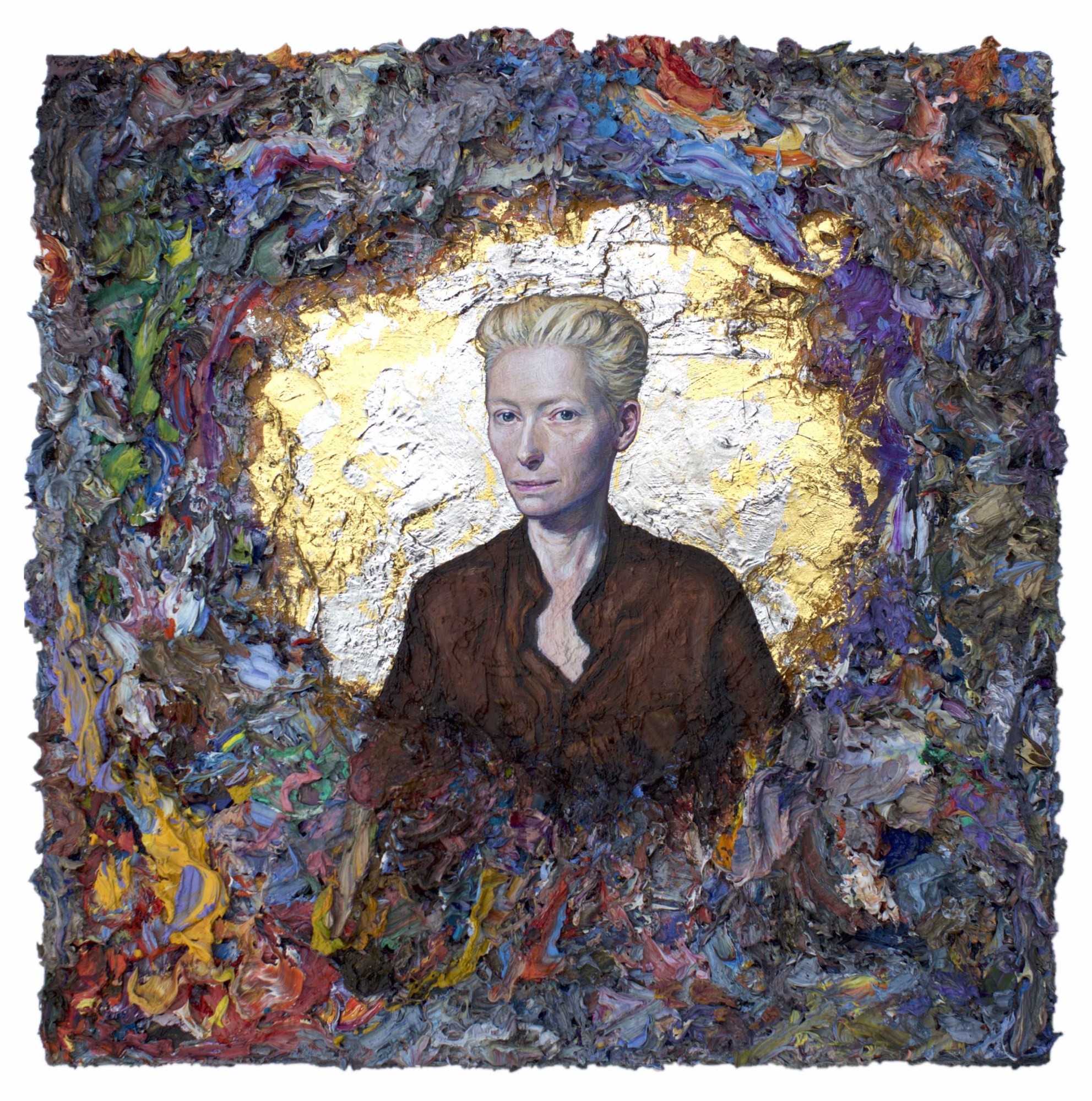If you Google Sandro Kopp, the first results his name brings up are linked to celebrity gossip via The Daily Mail and Just Jared. Kopp’s partner, the polymorphic actress Tilda Swinton, is a source of public fascination — and thus their relationship is too. But Kopp’s creative output, as a vivid painter, stands on it own. While he has hybrid origins from New Zealand and Germany, his present home is in the Scottish Highlands — when he’s not following his partner to faraway film sets with his mobile paint kit in tow.
In his new exhibition, TAKE TIME, now on view in Paris, Kopp displays a fresh selection of his signature painted portraits, featuring his entourage, his partner, and even himself. He has shifted away from his previous Skype paintings — a series motivated as much by his extremely nomadic lifestyle as by the compelling visual distortions caused by crappy internet connections. Instead, he has been painting people in live sittings of several hours, against spare backgrounds. The exhibition spans 13 years worth of work, including several paintings over which Kopp labored for five years’ time apiece.

What’s your artistic process like?
The fillet of my working hours is from 9pm until 3am. The beginning is always very spontaneous, then — once I have found a good trail to follow — it’s just a question of staying on target. I draw a lot. Generally, my approach to painting is very linear. I would say I’m more of a draughtsman than a painter.
Why portraiture? Do you ever divert into other forms?
Yes, I think it’s important to keep pushing into new areas, whether it ends up in a show or not… Last year I spent several months making sculptures, which strongly influenced the very three-dimensional, object-like nature of many of the paintings.
You travel frequently and have lived in various parts of the world. How does place affect your work, if at all?
Of course being in the studio is the best, but I work everywhere. I have a portable studio that takes up a third of my suitcase. I’ve worked in hotel rooms this year, in trailers, at friends’ houses, and on beaches. Place is not particularly relevant to my work at the moment.
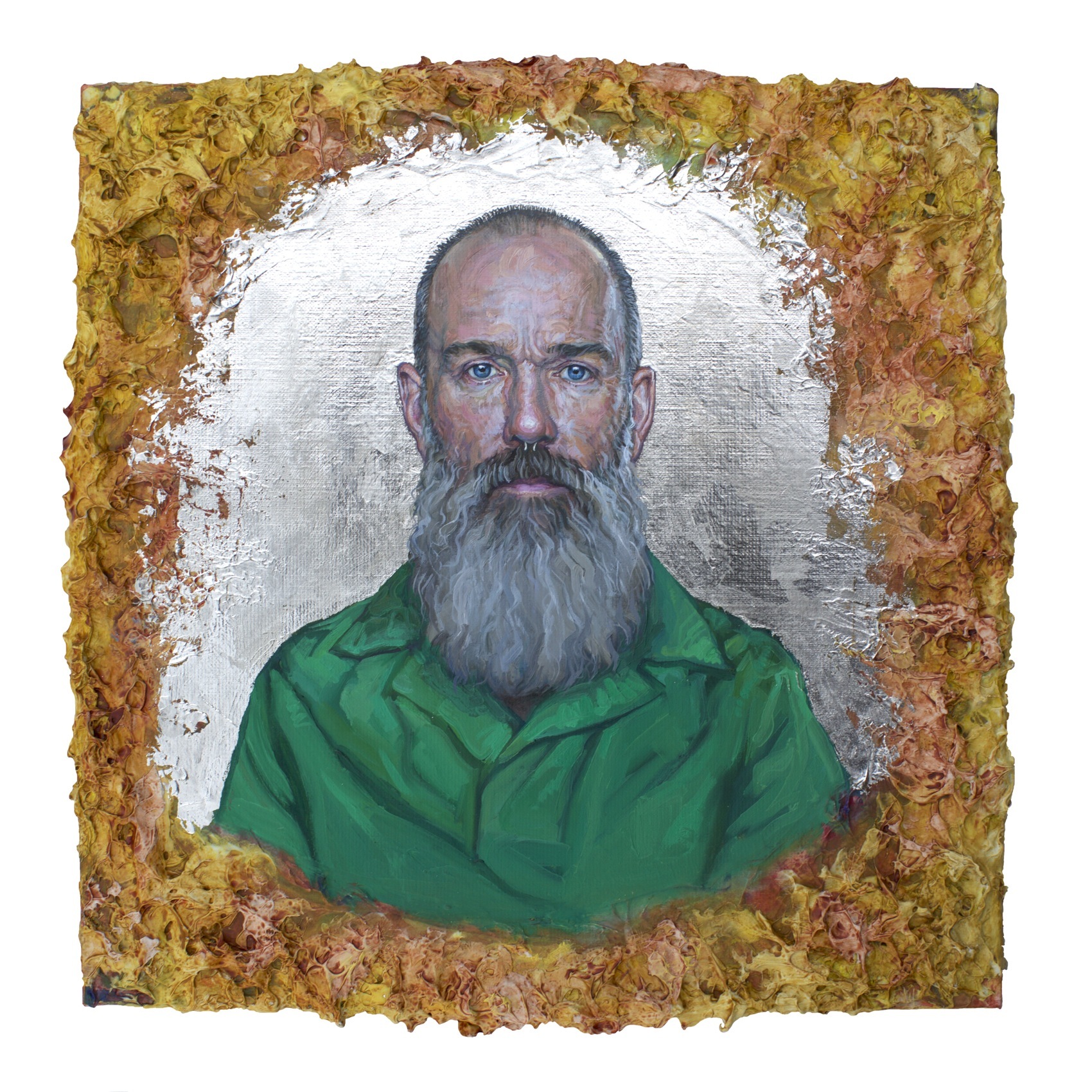
Thinking about your Skype portraits, how does technology enhance or dilute communication?
When I first started doing Skype paintings in 2008, this form of communication and of being together was really new and exciting. In the years since then, it has become quotidian. Everyone now has FaceTime in their pocket. Also the connection speed and technology has advanced to the point where it is quite difficult to get the pixelation and visual distortions that I find so interesting and that create this sort of “instant Impressionism” in the Skype work.
Is that why you shifted away from the Skype portraits for this new exhibition?
For FEEDBACKLOOP — my last show in New York — I feel like I brought the Skype thing to its current apex. I re-painted Skype portraits through slow Wi-Fi connections in series until they became completely abstracted. I am continuing to make Skype paintings. That is a theme I will always carry on. But, before I do another Skype show, I want to get a fresh perspective on what this intersection between digital technology and classical painting means now and on how I can best represent that.
TAKE TIME is my first video-chat-free show in almost a decade. It’s more that there are various strands of my work that are constantly ongoing, and from time to time one becomes more dominant — like a particular instrument in the orchestra picking up the main theme of a composition.
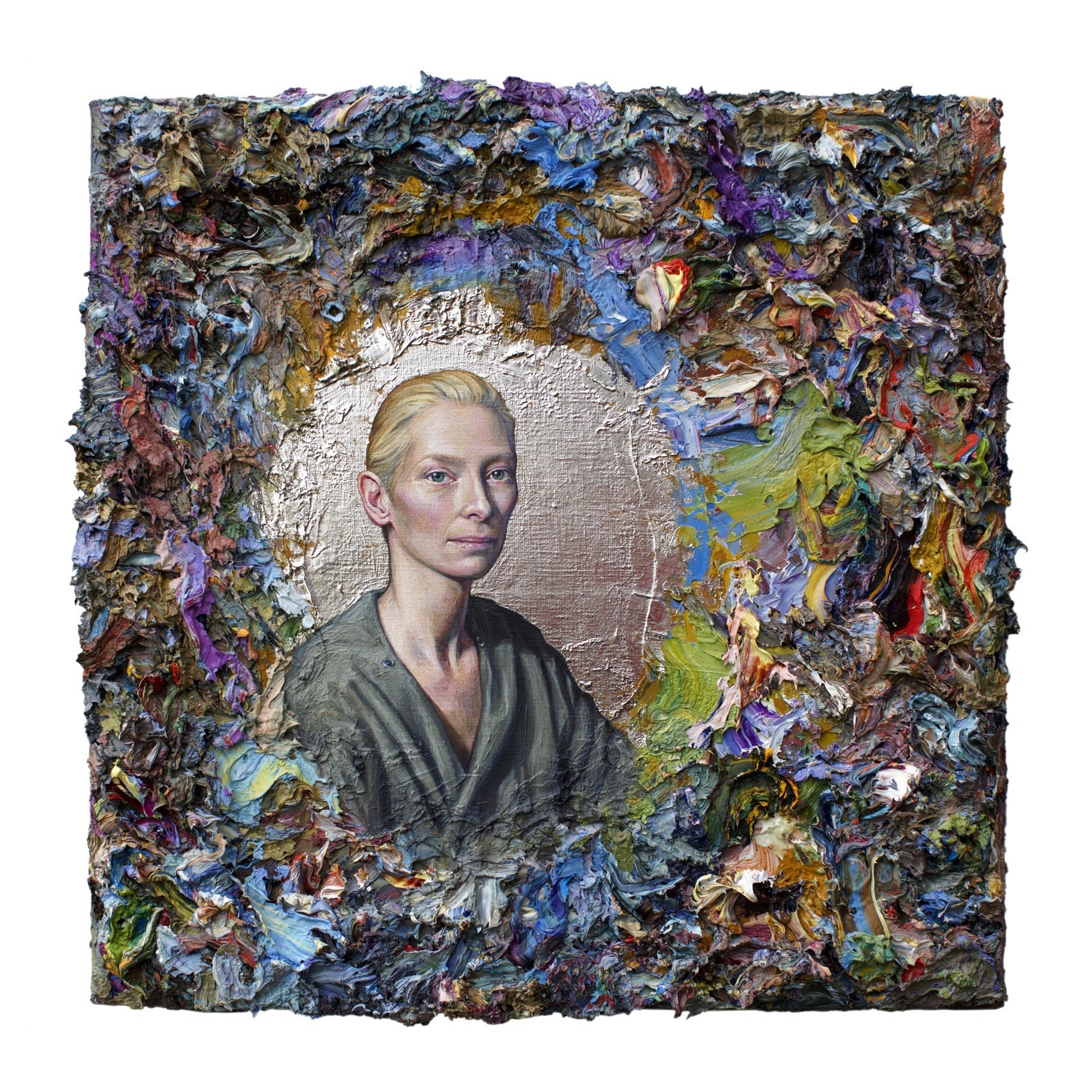
Your partner, and a few of the friends you depicted, are recognizable figures. Does portraying people who are known add pressure, since people come with their own preconceptions?
I’ve painted all the people in the show because they are close loved ones to me. The fact that some of them are famous is incidental. However, as a viewer, I think celebrity is a sort of shortcut to meaning. So, if you look at a portrait and assess it purely as painting, there is an alternative type of mystery to it, compared to what you experience when you know who it is. It’s very different looking at Lautrec’s painting of Vincent Van Gogh if you know who the subject is than if you see it just as a painting of some bearded guy in a bar.
Why did you chose the title “Take Time” for a trilogy of works in the show?
These three [pieces] are central to the show and different to all other works in it. The encrusting oil paint on Take Time I, II and III is several years’ worth of palette-scrapings. Each blob is the trace of a particular day or two of painting. The portrait is then painted in the center, which is left more or less clean and flat. After the sitting, the image is built up over months, refined in dozens of layers and then surrounded by precious metals like gold, palladium and platinum. Also, I have done so many paintings of my sweetheart over the past 12 years, that finding new titles can become a challenge.
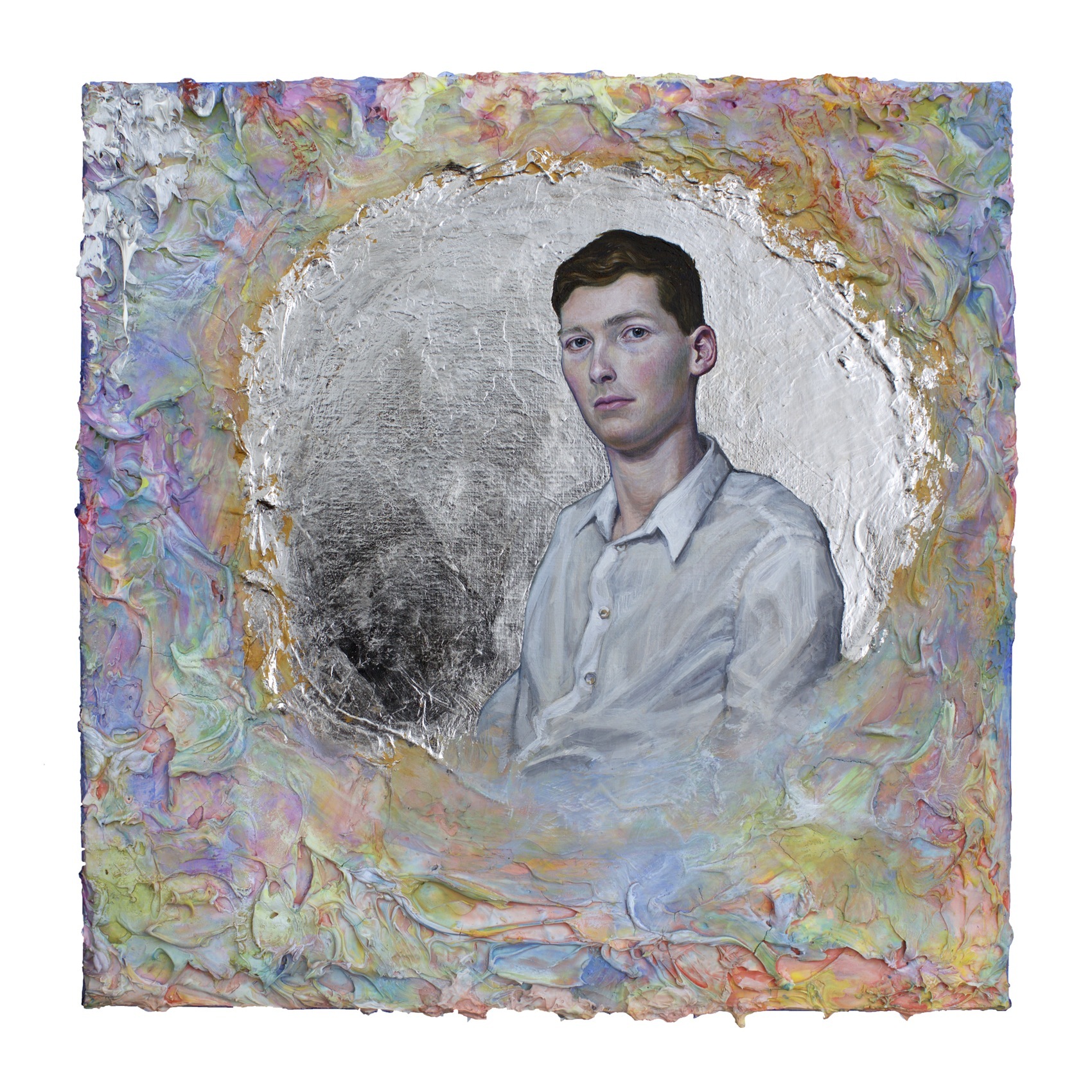
How much does intimacy help you see a person well, and how much does it prevent you from being able to see them anew?
That is a very good question. Visually, familiarity does very little when it comes to the actual painting process, but it allows you to assess what you’ve done more swiftly and more accurately. Also, it does make the sitting more comfortable, which, in turn, has a positive effect on the results.
What non-art world influences find their way into your work?
Diving. In fact, I refer to the encrusting structures on my new paintings as “reefs” for lack of a better term, but also because of my love of diving and the submarine world in general. I adore the way corals take time to build slowly, bit by bit, creating structures that can ultimately turn into islands by an almost alchemical process of solidification, using elements drawn from their liquid surroundings. When I lived in New Zealand, I always had my wet gear in my van and I would go diving or spearfishing any time the ocean was calm enough. I think all the time I have spent in the sea has finally found its way into my work.

How is self-portraiture different than portraiture?
I’m not trying to be funny or crude, but it is very much like the difference between masturbation and intercourse: the former is reliable and can be satisfying, but ultimately it’s a bit boring… the latter is an adventure and more exciting, but you have to deal with the potential inconvenience of needing a second person who needs to be available, in the mood, and have chemistry with you. This is perhaps a strange analogy to be making, especially since, for me, there is nothing erotic or sexual about painting at all, but it just feels like it explains most succinctly the specific energies involved.
You have an Instagram account; what role does social media have for your work?
I use Instagram exclusively for my work. Nothing private goes on there. If you’re a painter and doing one or two shows a year, it can feel a bit like you’re shouting into the void a lot of the time. Social media is a way of getting a response, of feeling heard, of receiving an ego boost. If I have a dip in confidence in my work, it’s an “upper” to post a picture and feel the wave of positive attention. However, I’m very aware that this is an extremely addictive dynamic, so I limit strictly the amount of time, energy, and attention I spend on social media.
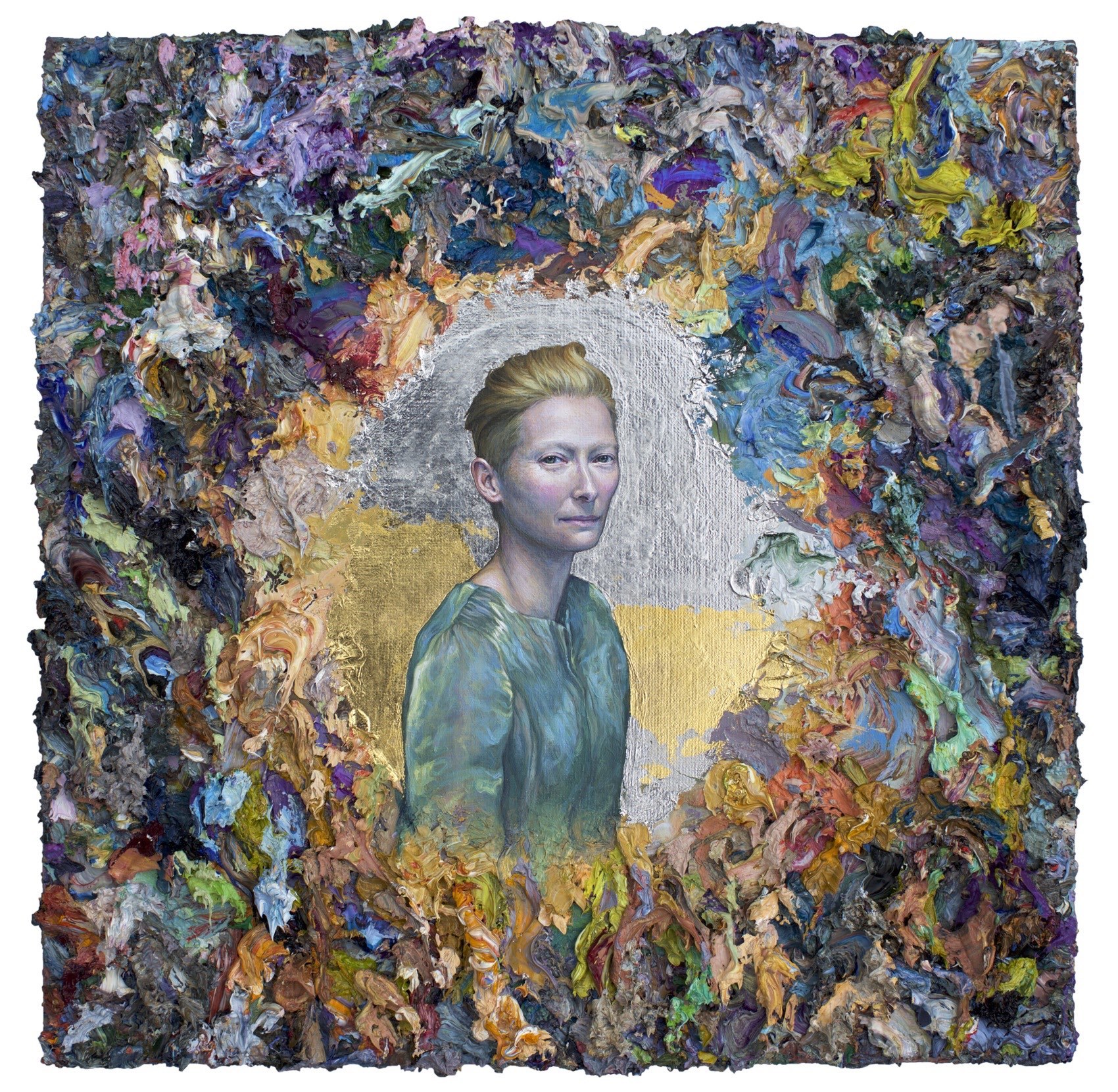
Credits
Text Sarah Moroz
Images courtesy Sandro Kopp
